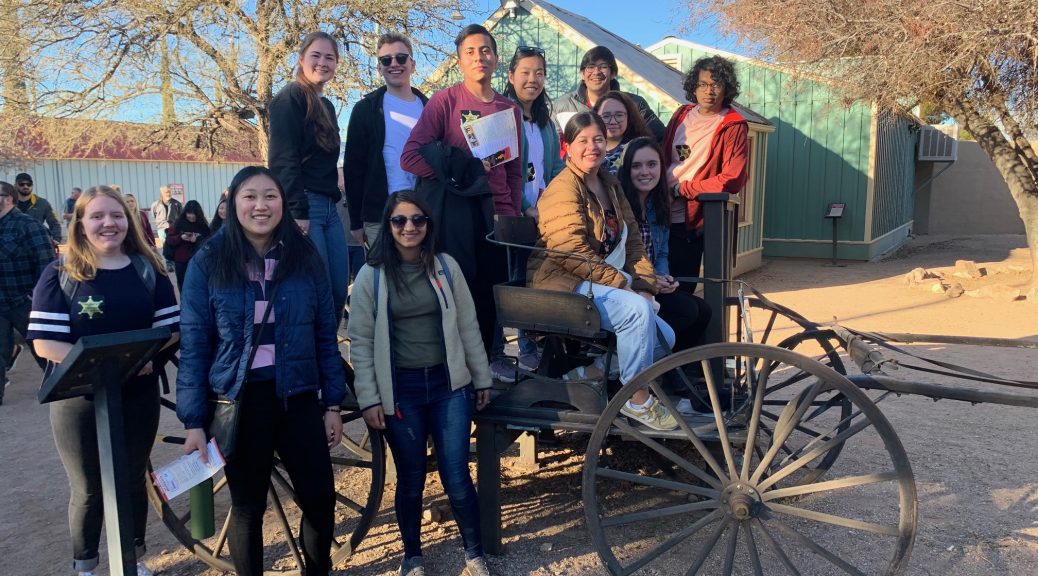
Border Trip: Day 4
Post written by Vanessa Lam and Bonnie Chin. Colgate Class of 2022.
The town of Tombstone differed greatly during the day. The barren dirt roads were replaced with townspeople donning traditional western clothing and horse-drawn carriages. Tourists mingled in between and filled the streets. As we wandered around the town in the morning sun, we couldn’t help but gape at the town’s preservation of the Wild West. In the early afternoon, we took a walking tour of Tombstone’s history given by the entertaining Dr. Jay. Despite Tombstone’s current population of around 1,200 people, Tombstone used to be a booming mining town for silver and many would travel across the country to work in the town. Immigrants were emphasized during the tour as we traced their historical impact on the town. Chinese immigrants came from the west coast and worked on the railroad. Irish immigrants came from the east coast and worked in the mines. Many different immigrants resided in Tombstone and worked on the railroads and in the mines, shaping Tombstone into what it is today. Without their efforts, Tombstone would not have been the biggest silver mining town in the 1800’s. Today, Tombstone’s main profits are of tourism; however, it was built on the hard work of immigrants from 26 different countries. This small town once experienced immense prosperity due to the diversity and determination of its workers.
In the afternoon, we watched a performance by Gabriela Galup, a puppeteer of Maki Maki Theater. Through music, audio recorded anecdotes, lights, and inanimate objects she created from scrap materials, she was able to create a sensory environment to share her story on immigration. As an immigrant from Peru, she felt that the southern border was a symbolic convergence of issues close to her heart, including human migration, climate change, and access to water. Water played an especially important role in her performance because it is essential to life and connects all living things. This relationship with human migration brought an additional layer of humanity to the issue. Often times when we read about immigration, it can be portrayed as a black and white issue. And because we are distanced from the issue, we can forget that the statistics and theories we learn about are drawn from people who are directly affected by the issue. As a result, we felt that her vulnerability communicated through the visual and performative arts was powerful in forging connections with us, despite a language barrier. Her openness to different interpretations and feelings that we felt after watching her performance allowed us to each take away a different perspective on the issue of immigration.
Thinking about the day at Mario’s over pizza in Tombstone during dinner, we didn’t expect to learn about immigration through such different perspectives. But what we’ve learned was that immigration connects us all; it was able to build a prospering city. It’s powerful enough to be expressed without words and shared with an open audience. As we continue learning about immigrants, we are reminded that the history and emotions tied with immigration connects us all.